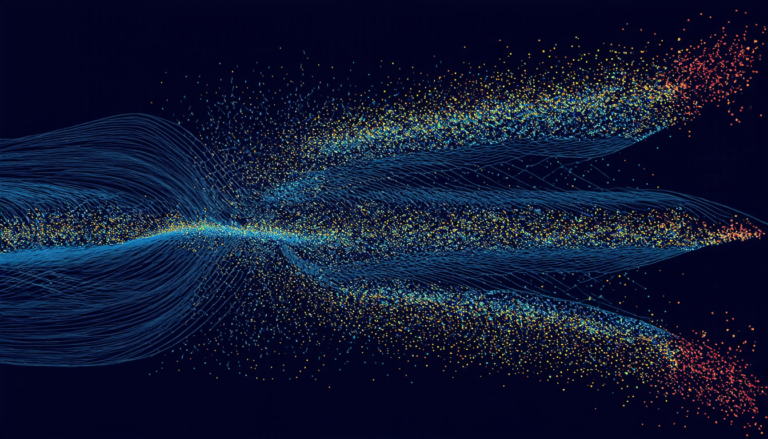Friday 28 February 2025
Scientists have made a significant breakthrough in understanding the behavior of particles called B mesons, which are a type of subatomic particle found in high-energy collisions at particle accelerators. These particles are important because they can help us learn more about the fundamental forces of nature and potentially even shed light on new physics beyond our current understanding.
B mesons are created when protons or other particles collide at incredibly high energies, releasing a shower of subatomic particles in the process. One of these particles is the B0 meson, which has a unique property: it can decay into different types of particles with varying probabilities. By studying these decays, scientists can gain insight into the fundamental forces that govern particle behavior.
In recent years, researchers have been able to study the decays of B0 mesons in great detail using powerful computers and sophisticated algorithms. However, there was still much to be learned about the underlying physics of these decays. That’s where a new paper comes in, which presents a comprehensive analysis of B0 meson decays into two types of particles: J/ψ (a type of meson) and h1(1170) or h1(1415), which are light axial-vector mesons.
The authors of the paper used a technique called perturbative QCD, which is a way of calculating particle interactions using the principles of quantum mechanics. By applying this method to B0 meson decays, they were able to predict the probabilities of different decay channels and even make predictions about the properties of the particles involved.
One of the most interesting findings from the study is that the decays of B0 mesons are highly sensitive to the mixing angle θ, which describes how two light axial-vector mesons (h1(1170) and h1(1415)) mix together. This sensitivity means that by studying B0 meson decays, scientists may be able to learn more about this mixing angle and even test theories about new physics beyond our current understanding.
The authors also found that the decays of B0 mesons are dominated by longitudinal polarization contributions, which is a phenomenon where the particles involved in the decay have a certain orientation. This finding has important implications for future experiments designed to study B0 meson decays, as it suggests that scientists should focus on measuring these longitudinal polarizations in order to gain a deeper understanding of the underlying physics.
Cite this article: “Unveiling the Secrets of B Mesons: A Breakthrough in Understanding Particle Behavior”, The Science Archive, 2025.
Particle Accelerators, Subatomic Particles, B Mesons, High-Energy Collisions, Fundamental Forces Of Nature, Perturbative Qcd, Quantum Mechanics, Mixing Angle Θ, Longitudinal Polarization, Particle Decays







